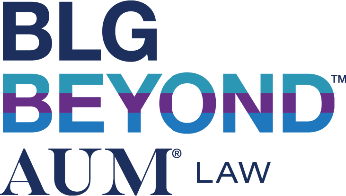On September 2, 2021, the Ontario Securities Commission (OSC) published its 2021 Annual Report – Promoting Confidence, Fostering Innovation (Report), along with its financial statements for the year ended March 31, 2021 and the accompanying MD&A. The Report highlights a busy year at the OSC.
There were 1,319 registered firms and 67,758 registered individuals in Ontario as noted in the Report. In the past year, the OSC reviewed 645 public company prospectuses, up more than 67% from the previous fiscal year, and a further 280 prospectuses from investment funds and structured products. The OSC Enforcement Branch assessed a record 807 cases and 164 tips were received under the Whistleblower Program. It issued 42 administrative sanctions, up from 22 in the previous fiscal year, handing down $11.1 million in monetary sanctions. The Quasi-criminal Serious Offences Team completed 11 cases, with two charges laid against 4 respondents.
The OSC continues to implement the Ontario government’s five-point capital markets plan focused on strengthening investment in Ontario, promoting competition, and facilitating innovation. In addition, following recommendations of the Capital Markets Modernization Taskforce, the Ontario government announced in its spring budget that it plans to move forward with legislative amendments to expand the mandate of the OSC and modernize its governance structure. The OSC is working to embed the new mandates to promote competition and foster capital formation into its work and is moving forward with key structure changes, including greater separation of its Tribunal under the OSC umbrella.
The Report included a 2020-2021 Report Card setting out how the OSC has fulfilled the obligations set out in its 2020-2021 OSC Statement of Priorities. The OSC sought to promote confidence in Ontario’s capital markets, reduce regulatory burden, facilitate financial innovation, and strengthen its organizational foundation. In furtherance of these goals, the Client Focused Reforms (CFRs) remain on schedule for implementation by the end of 2021. The OSC views these as fundamental reforms that provide retail investors with greater confidence that they are receiving investment products that are right for them and advice that puts their interests first.
Additionally, the OSC adopted final rules that prohibit order-execution-only (OEO) dealers from receiving trailing commissions from fund organizations where advice is not provided. Ontario joined other CSA jurisdictions to harmonize the ban on deferred sales charges taking effect on June 1, 2022.
The Report notes that activity in the crypto asset sector has accelerated, with global crypto asset market capitalization doubling from January to April 2021 to reach US$2 trillion. Along with its Canadian Securities Administrators partners and the Investment Industry Regulatory Organization of Canada (IIROC), the OSC announced steps that crypto asset trading platforms must take to comply with securities legislation. The OSC issued a deadline for platforms operating in Ontario to engage with it to start compliance discussions or face potential enforcement action.
Furthermore, the Report notes that the OSC has completed 62 of the initiatives set out in its 2019 report on reducing regulatory burden, with more than 20 on track to be completed by the end of 2021. The Report states that the OSC is embedding a culture of burden reduction across the OSC, which includes providing a detailed cost-benefit analysis of proposed rules, ten of which were published this year. In addition, following a comprehensive review of best practices in leading jurisdictions, the OSC published an updated service commitment that provides investors, registrants, and other market participants with added transparency on the standards and timelines to expect when interacting with the OSC.
With respect to facilitating financial innovation, the Report notes that the Office of Economic Growth and Innovation, first announced in 2019, is now fully staffed, including experts in capital raising and new financial intermediation technologies, allowing the OSC to support and encourage innovative business models. The OSC has also established a new Digital Solutions Branch (DSB) to lead the OSC’s data-driven transformation by building the data capabilities needed to support all aspects of its work.
If you would like to discuss the items highlighted in this summary or any aspect of the Report and its relevance to your business, please do not hesitate to contact us.
September 30, 2021
